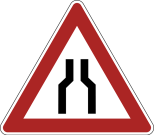- Howie Fenton
- |
- January 24, 2017

Before the holidays, I recommended reading the book The Goal: A Process of Ongoing Improvement by Goldratt and Cox. It is an interesting book with a slightly different take on how to think about your workflow. Traditionally when we think about workflow we think about how fast equipment works. For example, how many pages per minute presses print, or how many sheets can be inserted into an envelope per hour. What was interesting in The Goal was that in the early parts of the book they not talk about the advantages of automation, but rather the pitfalls. If the book talked about print production, our manufacturing guru Jonah would tell our in-plant manager hero Alex Rogo, "It doesn't make sense to run that press all the time if you have a bottleneck in the finishing area. The reason is you are simply adding to the bottleneck in the finishing area. Instead you should turn your press off and focus on the bottleneck." This would be considered heresy in most shops.
The Value of Software Automation in All Parts of Workflow
Another eye opening point from the book is that bottlenecks can be anywhere in your workflow and have the same effect. Regardless if they are in the beginning or the end of the process, all bottlenecks or piles of work in progress hurt overall productivity. Personally, I believe that bottlenecks at the end of the process get more attention from staff because they are often behind schedule when they get the work. For example, we hear about bottlenecks in the prepress department, or the finishing area as having the most devastating effect on on-time delivery. According to The Goal however, bottlenecks in estimating, design, job ticketing, and customer service will have the same impact on a workflow as those that occur later in the process. Personally, I believe that is why companies underestimate the value of software automation early in the process. I believe that the perception is that automating the back end pays higher dividends than automating the front end of the process.
Solve Both Early and Late Stage Bottlenecks- Both have a Payoff
Solving bottlenecks in the early and late parts of the workflow process are both important. Before the holidays, I worked on an assignment to recommend new hardware and software to an in-plant near Washington, DC and calculated that a Web-to-print solution would save 205 hours a year in labor and in-line finishing would save 350 hours in labor, resulting in a savings that included a reduction in waste of over $170,000/year.